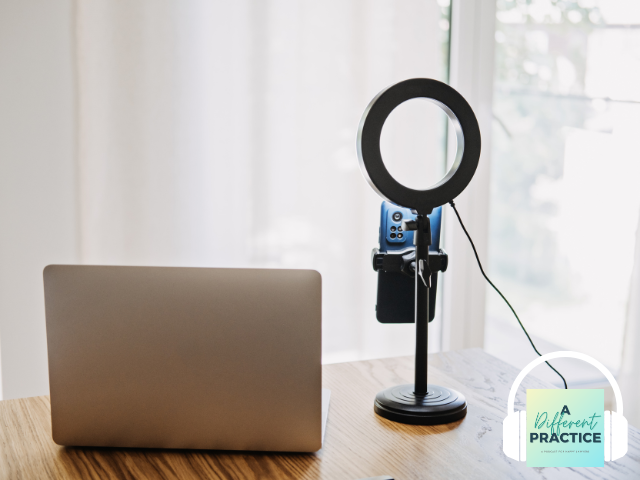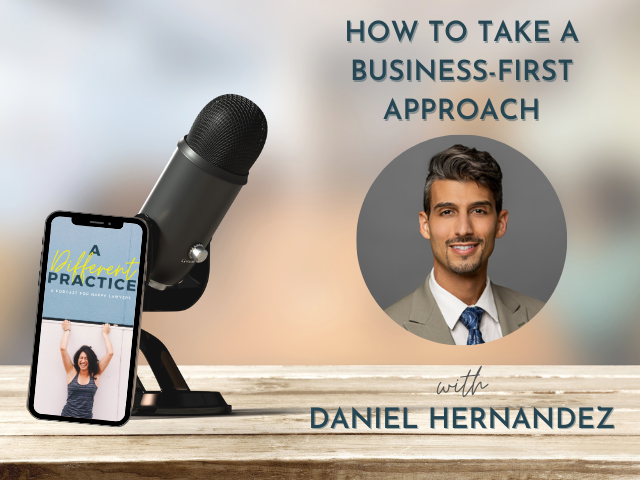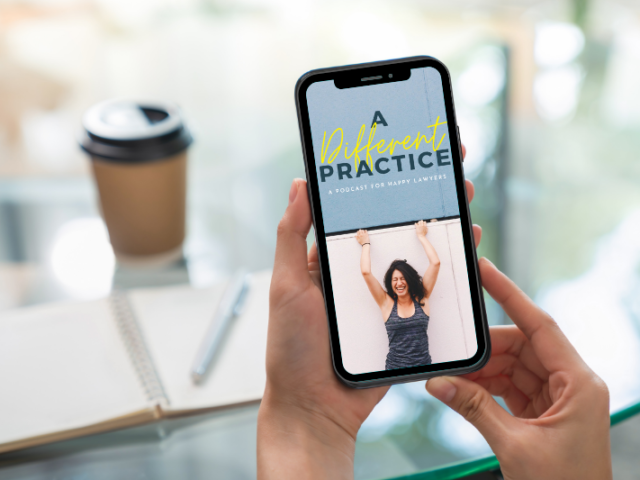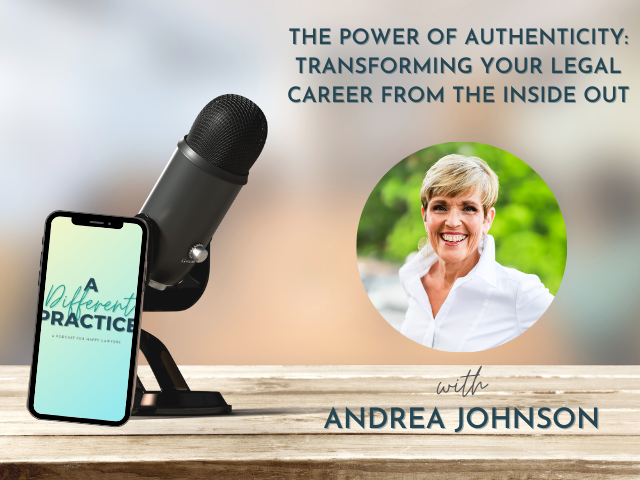Episode Description
Struggling to stay consistent with your marketing because who has the time, right? In this episode, I’m breaking down the exact system I use to create an entire month of YouTube content in one afternoon—without a production team, fancy equipment, or endless retakes.
You’ll learn:
✔️ How to create a simple, repeatable content plan that eliminates creative burnout.
✔️ Why consistency crushes perfection (and how that mindset shift will free up HOURS each month).
✔️ The exact AI prompts I use to brainstorm video topics fast.
✔️ How to script powerful, engaging videos in minutes—without sounding robotic.
✔️ My lazy-genius batch recording setup that takes less than 5 minutes to prep.
This episode isn’t about theory—it’s about taking action. Whether you’re camera-shy or perfection-obsessed, I’ll show you how to create impactful, client-attracting video content that markets your law firm 24/7… even while you sleep.
Stop letting video marketing feel overwhelming. Tune in, take notes, and get ready to record your first batch of videos next week.
🎧 Listen Now!
Episode Transcript
LAUREN: [00:00:00] You don’t need a $5,000 camera, a 10 person team, or a background in broadcast journalism to create video content. You need a plan and maybe a little caffeine. Welcome to a different practice. I’m your host Lauren Lester, and I’m passionate about helping solo attorneys build thriving practices. After starting my own solo firm, straight out of law school and building it to a successful practice that earns well over six figures while working part-time, I’m here to share the tools and strategies that made it possible.
Think of this as grabbing coffee with your work bestie while learning everything they didn’t teach you about running a business. Than law school. Pull up a seat and get ready to build a different practice. Welcome back everyone to a different practice. I’m so excited to share this time together. Thank you for being here.
Today, we’re diving into the content creation strategy that will accelerate your law firm’s marketing while saving you about 20 hours a month. I’m gonna show you exactly how as a solo [00:01:00] practitioner, without a marketing team, without any assistance, that you can create an entire month’s worth of YouTube videos in just one afternoon.
Why does this matter? Because your potential clients aren’t spending time reading online to find a solution to their problem. They’re watching videos. YouTube is the second largest search engine in the world. Yes, I’ll say that again. YouTube is the second largest search engine in the world, and your future clients are there right now searching for answers to the exact legal problems that you solved.
Recently, a new client came to me and said, I watched six of your videos before I called. I feel like I already know you. After just five minutes of our consultation, they were ready to sign up and buy a service worth several thousand dollars because they were already pre-sold on working with me. And in our fast-paced world where hundreds of videos seem to be posted every single second.
Here’s the thing about video content that took me [00:02:00] way too long to learn. Consistency, absolutely demolishes perfection. A good enough video that actually gets published will outperform the perfect video that’s been sitting in your drafts folder for the last three months. So let’s break down exactly how you can make a month of YouTube content in one afternoon.
Step one is to start with a lazy genius content plan. Yes, lazy genius. So first, we need a system that doesn’t require creative inspiration. Every single time you sit down to make content that is exhausting and unreliable. I. Instead, you wanna pick three to five core content categories that you’ll rotate through.
So for my estate planning practice, minor things like FAQs, that potential clients always ask client education on just the process and the documents that they may wanna be considering. Things you didn’t know about. Estate planning a behind the scenes look at how I work. And quick legal updates that could affect families [00:03:00] here in my state in Colorado.
Having these five core content categories gives me a framework so that I’m never starting from scratch. Now, here’s where we work smarter, not harder. I. I use AI to brainstorm specific video topics within those categories. For example, I’ll prompt chat, GBT or Claude to give me 20 simple YouTube ideas for estate planning for business owners.
Or what are the 20 most common questions clients have about setting up a trust and literally seconds. I have enough content ideas for months, but, and this is crucial, I don’t overthink the selection process. I pick the first 10 topics that hit me in the gut one’s where I’m already answering the question in my head, and I save the rest for the next batch day.
One of my most watched videos came from this process. I answered the question of, well, how is custody determined in Colorado? It’s generated dozens of consultations because it breaks down a really complex topic that many parents don’t understand when [00:04:00] they start going through a custody case. Step number two script, but not too much.
Remember, we’re not filming a Hollywood production here, so over scripting will kill your natural energy and just make you sound kind of robotic. So instead I create bullet point scripts with a simple structure. There has to be an attention grabbing intro. Then three main points I wanna cover and a clear call to action in the outro.
Let’s talk about the intro for a second, because those three to five seconds will make or break your video. The biggest mistake I see attorneys making is wasting those precious seconds with things like, hi, I’m Lauren, an estate planning attorney in Colorado. No one cares, at least not yet. You have to earn their attention first.
So instead, start with something that immediately signals the value that the viewer is gonna get by sticking around and watching. Open with a startling statistic. Something like, did you know that 67% of small business owners have no succession [00:05:00] plan? Or maybe you provide a provocative question, what would happen to your children tonight if you were in a car accident?
Or you could try a bold statement. The will that you downloaded from the internet might actually disinherit your kids. And lastly, you can start with a common misconception. Contrary to what most people think joint bank accounts may not avoid probate. You’ve gotta hook them in first and then introduce yourself.
Second, when viewers are scrolling through YouTube or any kind of social media platform, you have about three seconds before they decide to keep watching or swipe and move on. So make sure those seconds count. So your intro will start it, it will hook the viewer in, and then you’ll have three points that you want to make.
And you’ll finish with an outro. The total video can be as short as 30 seconds, but probably no more than three to four minutes max For me. I have found the best results when my videos are around 60 to 90 [00:06:00] seconds. It gives me enough time to make sure I provide value to the viewer, but it’s not so long that they’re going to get bored because I’m going way too in depth into a topic.
So if you’re looking at your bullet script, it could look something like this. So maybe the intro is, if you own a business and die without a proper succession plan, your family could lose everything that you’ve built. Here’s what happens. And then you’re gonna go into your three points. So 0.1 might be business operations, freeze without a clear succession plan.
Then you go to point number two, that family members may fight over control of that business. And point number three, business value can plummet during that period of uncertainty. You’ve got your intro, you give your three points, and then your outro if you want it to be more direct as a call to action can be something like Schedule a business succession planning session this month and get our business emergency handbook for free.
I wouldn’t recommend a clear call to action like that in every single video. It may come [00:07:00] across as a little bit too salesy, so maybe sprinkle those in for 25% of your videos. For the rest of them, you may say something like Follow for more helpful information about business succession planning, and that way the viewer is going to subscribe to your channel or your account, and then they will be able to get more of your videos.
And then when those 25% sales outros pop up, they’re gonna be far more likely to go ahead and schedule a consultation with you and probably ready to sign up because you’ve already built the trust factor with them through your super helpful videos. So when you’re putting your bullet scripts together, certainly AI can help draft those bullet points, but we always wanna make sure that we’re injecting not only our own personality, but making sure that the information is accurate.
So for me, I’ll prompt AI with something like draft a casual conversational YouTube script about what happens to your business if you die without a plan. Then I go through and I review it [00:08:00] and personalize it so I know what you might be thinking. How am I supposed to answer these questions with three quick points in 60 to 90 seconds?
The law is so complex. You’re absolutely right. But here’s the thing, folks online are not looking to watch a law school course. So if it doesn’t feel like you can properly answer the question or discuss the topic that you’ve picked within a shorter video timeframe, chunk it down to where you can. You can also always tease the next installment video at the end of your video to keep people coming back.
It would sound something like, stay tuned for my next video where I cover. X, Y, and Z that maybe builds on the video that you just recorded. The key is keeping your content educational but incomplete. You want viewers thinking, wow, that was incredibly helpful. I need to call this person to learn more or to have them help me.
You want to give away the what and the why, but you’re gonna charge for the how. Step number three, set the stage once. So my [00:09:00] videos are filmed on my iPhone, which is propped up on a stack of books. It is simple but effective. So to record videos, you only need a clean space to set up maybe a $30 ring light from Amazon if you don’t have natural light already available to you through a window or some other source.
Your smartphone, whether that be an iPhone or another type of smartphone with a camera placed either on a stack of books, if you wanna be cheap like me, or you can get a $15 tripod from Amazon, and then if you’re in a larger room or it’s a place where there might be an echo or just the sound quality may not be great.
You can also pick up a lavalier mic that would plug directly into the phone. It would clip onto your shirt, and then that way your sound is gonna be a lot better. That can make or break a video. So do a couple of tests and see how the audio sounds. So then if you need to for pretty inexpensively, you can grab a mic.
If you buy all that fancy equipment, which isn’t really that fancy, your total investment is still under a hundred dollars. And [00:10:00] here’s a pro tip that I learned. Film standing up instead of sitting. It’s amazing, but your energy level instantly increases by about 30%, and you just naturally gesture more, which is gonna make the delivery of your content even more engaging.
So for me, I spend about two minutes setting everything up, prep my iPhone up, make sure it’s in the right space, make sure I don’t have clutter behind me that I didn’t notice, and then I leave it there and it stays that way for my entire batch recording session. And that brings us to step four, batch record.
This is where the magic happens. Block off two to three hours on your calendar. Close your door, put your phone on, do not disturb, and just record all of your videos in one session. Here’s exactly the steps that I take. I review the script for two minutes and think about what I’m gonna say. Remember, it’s a bulleted script, so I just wanna make sure that when I’m going through those main points, I have the information that I want to include in the video.
Ready? I’ve kind of thought through it in my head. [00:11:00] Then I hit record. I deliver the content. I I recorded the video. I always find it helpful, especially if you’re nervous when you’re just starting out. When you hit record, you can all of a sudden feel like your mind goes blank. The whole world is looking at you.
You can feel a lot more nervous. So know that you can delete those recordings, uh, if you need to, but to get yourself more comfortable. It also can be really helpful to not think of it as delivering it into a phone or a camera. But think about a person sitting across from you, maybe your target client, right?
If you’ve thought through what that person looks like, their demographics, the things that they like to do, you know, imagine that they’re sitting across from you at a consultation and they’ve asked you this question, or you’re covering this topic with them. Talk to them when you hit record, it’ll make your delivery much more natural because it will make you feel a lot more comfortable.
Once I finish delivering the content, I click stop recording, and I move on to the next script. The whole process starts [00:12:00] over from there. I don’t review the footage. I really don’t try to take retakes unless I completely freeze up and my mind just goes blank. I remind myself of the mantra, published Beats polished.
Now if you’re worried about all of your videos looking the same because you’re recording them all at once and you’re wearing the same thing, here’s a simple trick that works wonders. Bring a couple different shirts or even put a jacket on and change halfway through. That’ll make it look like you recorded on different days, even though it was all within the same two hours.
If you look closely at my videos, you’ll notice a lot of times there’s a batch of them where I’m wearing the exact same shirt because this is what I do and I have never had anyone point that out. So I honestly don’t think folks notice. But if it makes you feel better. Certainly that’s an easy way to achieve that.
The last month, going through this process, I recorded 12 videos in just over an hour. Now remember, I’ve been doing this for a little bit longer, so the nerves aren’t quite there anymore. I’ve gotten the process down to a science, but I would guarantee that if you followed [00:13:00] this system, that you would be able to record at least six in that same time period.
And if you do it like I did, which is to schedule them to publish once a week, you’ve now got six weeks of content. Ready. That’s a month and a half of consistent content creation and less time than it takes to watch a movie. And that brings us to the last step, step five, edit Lazy style editing used to be my biggest time suck until I discovered AI assisted editing tools.
Now I use tools like DS Script, which transcribes my videos and allows me to edit just the text like you would in a document. So if I remove a sentence from the transcript, it removes that section from the video. Now, each video takes me about 10 minutes to edit. I trim out that first awkward few seconds where I’m hitting record and getting my body sort of situated before I smile and then start talking.
I’ll remove any major stumbles. So if I forget my words, something doesn’t come out quite right and I redo it over. I take those out. But I do [00:14:00] try and leave in some of the minor ones. I think that they make you human. You don’t sound so pristine and perfect that you might make your viewer maybe a little bit intimidated to wanna reach out to you.
So I think having some minor blips are helpful, but if you do find yourself, especially in the beginning, using a lot of filler words, saying, um, a lot. Like, you know, phrases like that, you may want to remove at least some of them so that it doesn’t distract from your video. Once I’ve got the video content where I want it, I add auto captions.
Those are really helpful. If you’ve ever noticed, maybe you do this yourself, but a lot of times folks will consume content on their phones and they won’t have the volume on. Maybe they’re in a quiet place where having the volume on isn’t something that they can do. Or maybe they’re someplace loud, where even if they had the volume up, they wouldn’t be able to hear it.
And so they’re gonna read the captions and see the same information from your video. So add those auto captions. Super easy using ai, and then I export the final video. You can export it directly [00:15:00] to YouTube with pre-safe settings, which is always really nice if that’s your platform of choice, or if you’re gonna have it on multiple platforms.
You can export it to your computer or your phone and then be able to publish it from there. There’s also a really great tool out there called Opus Clips that will automatically create vertical snippets for platforms like Instagram or TikTok. So if you’ve recorded for YouTube, which you may have recorded in a landscape version, something like Opus Clip will automatically take your final landscape video.
And crop it so that it is a vertical snippet, which is gonna make it look a lot better on those platforms with that orientation. With a tool like that, one video becomes content for three platforms with almost no additional work. And remember the mantra we’ve talked about as you’re editing good enough is good enough published beats, polished your potential clients care far more about the helpful information you’re providing than whether your video has the perfect production value.
One of my colleagues was recently talking [00:16:00] to me about how it took her six months to perfect her first video and feel like she could put it out there. In that same time, I probably published nearly 50 good enough videos, and I signed a dozen new clients from those videos. So let that be an example. That done beats perfect every time.
Alright, now you’ve got the exact blueprint to create a month’s worth of YouTube content in just one afternoon, even less than an afternoon, just a few hours. Now it’s time to actually do it, as Wordsworth said, to begin. Begin. So here is your challenge. For this week, pick your three to five content categories that align with your practice area.
Use AI to help you brainstorm and create bullet scripts for your first 10 videos, and then block off two hours on your calendar next week for your first batch record day. If you implement this simple system, six months from now, you will have published over 50 videos that are [00:17:00] working for your practice 24 7, even while you sleep and you’re taking Vacay days, it’s still working for you.
It’s educating potential clients and it’s pre-selling them on your services before they call your office. Now that’s the best salesperson for your practice. If you ask me, I know you’ve got this. I can’t wait to see your videos. Until next time, keep building a different practice. Thanks for joining me on another episode of a different practice.
If you found value in today’s conversation, I. Subscribe to my Solo Success Lab newsletter, where each week I test and share what actually works in solo practice. Sign up for free@adifferentpractice.com slash subscribe. Wanna help other lawyers transform their practices too? Follow the show, leave a rating and share this episode with someone who might benefit.
And if you’re ready to take your practice to the next level, download my free guide to the six pillars of optimization@adifferentpractice.com slash. Optimize. I’ve distilled nearly a decade of experience, including all the [00:18:00] mistakes and victories into the essential elements every successful law firm needs.
I’ll see you next time. Until then, keep building a different practice.





